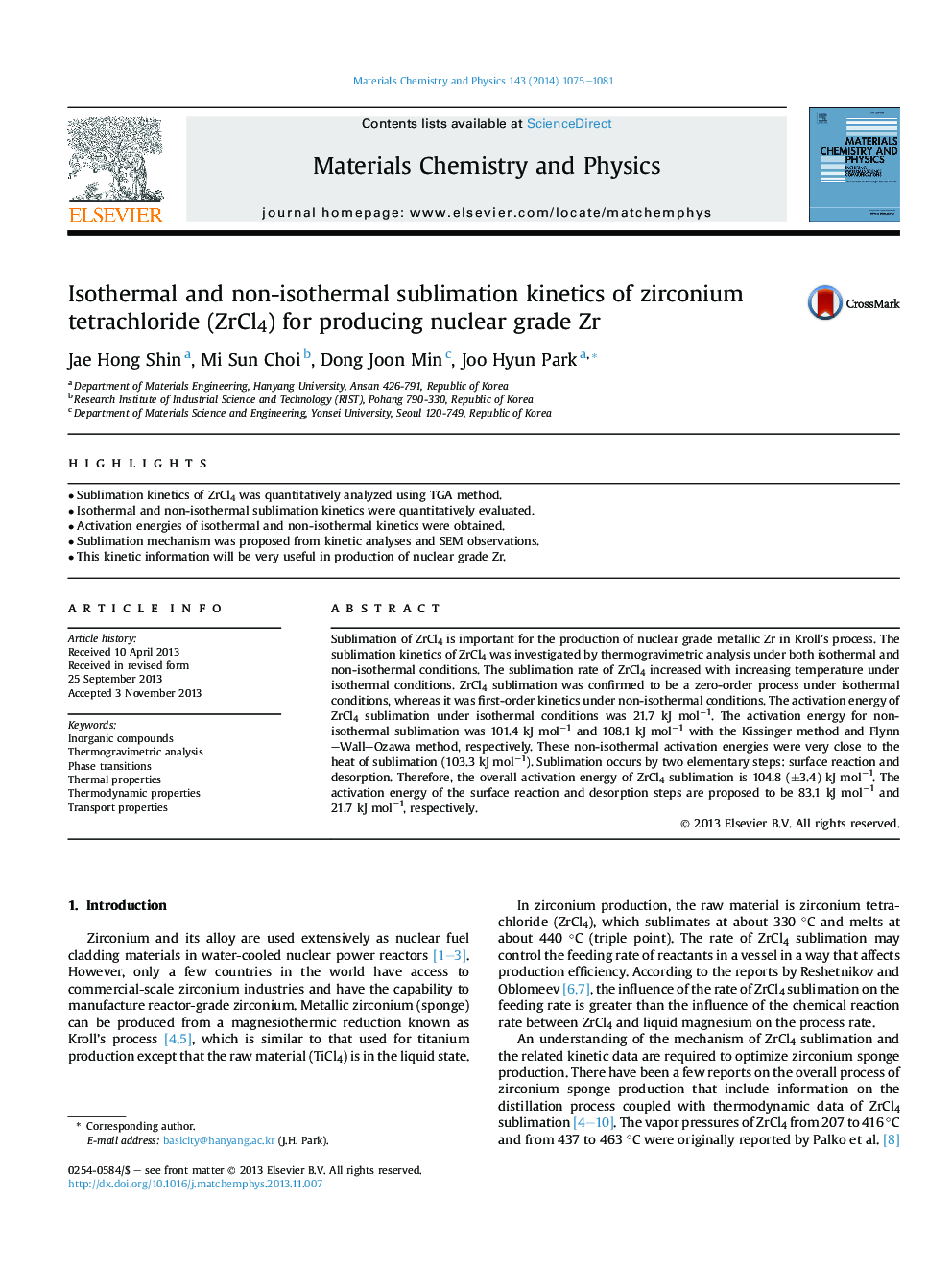| Article ID | Journal | Published Year | Pages | File Type |
|---|---|---|---|---|
| 1522220 | Materials Chemistry and Physics | 2014 | 7 Pages |
Abstract
Sublimation of ZrCl4 is important for the production of nuclear grade metallic Zr in Kroll's process. The sublimation kinetics of ZrCl4 was investigated by thermogravimetric analysis under both isothermal and non-isothermal conditions. The sublimation rate of ZrCl4 increased with increasing temperature under isothermal conditions. ZrCl4 sublimation was confirmed to be a zero-order process under isothermal conditions, whereas it was first-order kinetics under non-isothermal conditions. The activation energy of ZrCl4 sublimation under isothermal conditions was 21.7 kJ molâ1. The activation energy for non-isothermal sublimation was 101.4 kJ molâ1 and 108.1 kJ molâ1 with the Kissinger method and Flynn-Wall-Ozawa method, respectively. These non-isothermal activation energies were very close to the heat of sublimation (103.3 kJ molâ1). Sublimation occurs by two elementary steps: surface reaction and desorption. Therefore, the overall activation energy of ZrCl4 sublimation is 104.8 (±3.4) kJ molâ1. The activation energy of the surface reaction and desorption steps are proposed to be 83.1 kJ molâ1 and 21.7 kJ molâ1, respectively.
Keywords
Related Topics
Physical Sciences and Engineering
Materials Science
Electronic, Optical and Magnetic Materials
Authors
Jae Hong Shin, Mi Sun Choi, Dong Joon Min, Joo Hyun Park,
